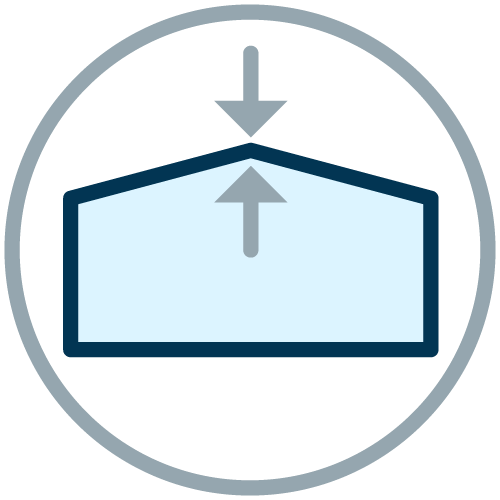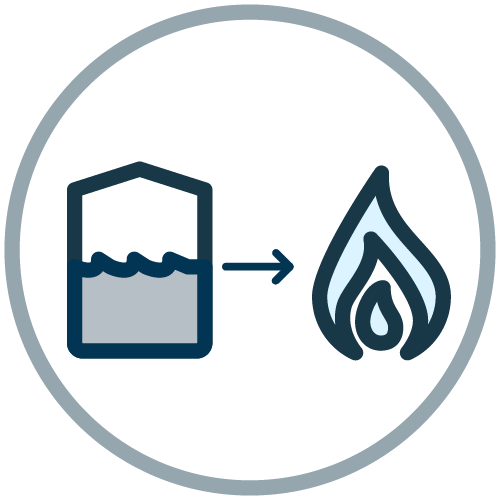|
* = Required Field.
|
About this survey
The goal of this survey is to capture your opinions about potential ways our campus can reduce our greenhouse gas emissions. This survey only aims to measure our campus collective interest and general familiarity with solutions that have been deployed or studied at other campuses. We will use this information as an early filter to accelerate solutions with broad support, focus our education and investigation efforts for solutions with open questions and quickly rule out solutions that are clear non-starters. Later steps in our process will include a more technical, quantitative analysis of promising solutions. Estimated time to complete: 10-20 minutes.
About this surveyEstimated time to complete: 10-20 minutes
56
|
| Institution |
Kent State University
|
|
|
Note: your email address is optional. Your email will not be shared nor associated with the survey results.
|
|
*
|
(check all that apply)
|
|
|
|
Please provide your input on the following list of potential sustainability actions.
You can click the icon to learn more about a specific topic.
|
*
Green Building Standards
High-performance or "green" building standards are a set of procedures that promote best sustainability practices in building design and construction. Standards typically center around sustainable materials, resource efficiencies, and reducing waste, pollution, or other environmental impacts. One institution’s standards are created by adopting similar standards created by organizations such as the U.S. Green Building Council, which promotes the Leadership in Energy and Environmental Design (LEED) rating system. There are other local and national standards organizations such as the Living Building Challenge or Zero Net Energy Building that support the development of green buildings. Once established, an institution’s staff and partners align around their chosen standards for all future construction projects, thereby systematizing greener practices.
|
--- Please make a selection. ---
1
|
*
Education & Behavior Change
This strategy consists of implementing an energy related behavior change program that will consist of education, technology and systems to enable occupants to be more aware of their individual impact on energy consumption and how their actions can detract from or contribute meeting GHG and energy goals.
|
--- Please make a selection. ---
2
|
*

Green Labs
Green Lab programs are focused behavior change programs that address energy conservation, safety, and waste reduction opportunities. Programs may include designing experiments to minimize electricity and water usage, purchasing green supplies, maintaining lab equipment to maximize efficiency, utilizing green chemistry practices, sharing of lab space and equipment when feasible, and training of staff and students in green lab practices. Many of these best practices are often rolled up into a Green Labs Certification program to help guide labs in improving their environmental footprint. Done right, green lab practices can greatly reduce waste and energy consumption in labs without sacrificing the integrity or accuracy of scientific results.Green Lab programs are focused on changes people in the labs can make. Green Lab programs are most effective when paired with a related Smart Labs program.
|
--- Please make a selection. ---
3
|
*
Space Management Optimization
More effective use of existing space holds the potential to reduce the material, energy and land resources consumed by new buildings and slow overall growth in terms of building square footage. The intent is to increase building space efficiency (i.e., people per gross square foot); utilization rates; and to build/renovate to consistent standards and to evaluated needs.
|
--- Please make a selection. ---
4
|
*

Efficiency Revolving Fund
Revolving loan funds (RLFs) are pools of capital from which loans can be made for clean energy projects—as loans are repaid, the capital is then reloaned for another project. Assuming that defaults remain low, RLFs can be "evergreen" sources of capital that are recycled over and over again to fund projects well into the future. Funds required to "seed" the RLF can be acquired from internal or external sources. (https://www.energy.gov/eere/slsc/revolving-loan-funds)
|
--- Please make a selection. ---
5
|
*
Strategic Energy Management (SEM) Program
Srategic energy management (SEM) is a long-term approach to energy efficiency that includes setting goals, tracking progress, and reporting results. A successful strategic energy management plan builds long-term relationships with energy users and targets persistent energy savings...For public buildings, strategic energy management reduces costs across many end uses and institutionalizes practices to sustain long-term savings. (https://www.energy.gov/eere/slsc/data-driven-strategic-energy-management)
|
--- Please make a selection. ---
6
|
*
Energy Metering and Management System
Installing energy monitoring equipment at the building or process level allows energy managers to collect the data they need to understand typical energy consumption, identify factors that drive consumption and develop performance targets to reduce usage. This data becomes particularly powerful when used with an Energy Management System (EMS) or dashboard and evaluated in terms of the underlying driving factors: weather, occupancy, usage, and installed equipment. The data collected is the foundation an EMS needs to track usage, identify excessive usage, detect equipment failure and operational problems, visualize energy consumption over time, track impact of energy management initiatives and set and monitor efficiency targets. Tracking and analyzing energy date is also vital to any Continuous or Retro Commissioning activities.
|
--- Please make a selection. ---
7
|
*

Sustainable Procurement
Campuses have the potential to use a lot of natural resources through the products they consume. Purchasing decisions are most often decentralized and focused first on cost. Updating procurement policies can reduce waste generated from product manufacturing and packaging as well as reduce carbon emissions from direct and indirect energy consumption. A focus on local purchasing can have a co-benefit of supporting local economic development.
|
--- Please make a selection. ---
8
|
*
Grounds Management Policies / Practices
This strategy is focused on ensuring that grounds management practices and policies are consistent with the GHG objectives. Sample policies could speak to the types of plants that are planted and areas that require mowing or other GHG intense forms of maintenance. Also, land management policies that would enable carbon sequestration in trees and other long-lived plants could also be considered.
|
--- Please make a selection. ---
9
|
*
Plug-load Management
Strategies to remove or reduce energy demand from equipment that is drawing power when plugged-in but not in use.
|
--- Please make a selection. ---
10
|
*

Lighting Retrofits
Replacing older light bulbs and light fixtures with modern, high-efficiency alternatives. Projects often include lighting control upgrades such as occupancy sensors, daylight monitors and scheduling controls.
|
--- Please make a selection. ---
11
|
*

HVAC Upgrades
HVAC (Heating, Ventilation and Air Conditioner) systems are energy intensive and make up nearly a third of a building’s energy demands. Investing in HVAC upgrades increases the system’s overall efficiency thus cutting energy use and emissions while generating savings from reduced operational maintenance and energy bills. Upgrades can be capital intensive, but the resulting energy savings can provide high financial returns with little risk.
|
--- Please make a selection. ---
12
|
*

Building Envelope Upgrades
A building envelope consists of the walls, windows, foundation and roof and isolates the building’s climate from the exterior climate. The U.S. DOE claims that a building’s envelope accounts for “approximately 30% of the energy consumed in residential and commercial buildings and plays a key role in determining levels of comfort, natural lighting, ventilation, and how much energy is required to heat and cool a building.” Retrofitting a building’s envelope or designing a new building with the envelope in mind is essential to the building’s energy efficiency.
|
--- Please make a selection. ---
13
|
*
Green Roofs
Green roofs use soil and vegetation as living insulation. Cool roofs reflect solar energy. Both reduce building energy use for heating and/or cooling.
|
--- Please make a selection. ---
14
|
*
Energy Recovery Ventilation
Energy recovery ventilation (ERV) is the energy recovery process in residential and commercial HVAC systems that exchanges the energy contained in normally exhausted air of a building or conditioned space, using it to treat (precondition) the incoming outdoor ventilation air.

Image Source: 'Ventilation unit with heat pump and ground - cooling' by Kobraklb is licensed under CC BY-SA 3.0
|
--- Please make a selection. ---
15
|
*
(Retro-)Commissioning / Controls
Retro-commissioning is a systematic process to improve the efficiency of an existing building's installed equipment and systems specifically in buildings that have never been properly commissioned. It is often the first step in an upgrade process and can often resolve problems that occurred during design or construction, or address problems that have developed throughout the building's life as equipment has aged, or as building usage has changed.
|
--- Please make a selection. ---
16
|
*

Ongoing Commissioning
Ongoing or Continuous Commissioning® is an ongoing process undertaken by building operations to resolve building equipment operational problems, improve comfort, optimize energy use and identify operational and retrofit opportunities for commercial and institutional buildings. Properly applied Ongoing Commissioning can result in energy savings of 20% annually and a simple payback of 1-3 years. With ongoing monitoring of building management systems, reduced maintenance costs may also be realized.
|
--- Please make a selection. ---
17
|
*

Smart Labs
Laboratory spaces are often the most energy intensive spaces on campus, consuming 4 to 5 times the energy of typical commercial space, and accounting for up to 70% of a given campus’ energy footprint. This substantial impact makes laboratories a key focus area for energy, waste and carbon management. Smart Lab programs often address both energy conservation and waste reduction opportunities.
|
--- Please make a selection. ---
18
|
*

Smart Buildings and Grid Infrastructure
Digitalization and new technologies offer innovative approaches for CO2 reductions on campuses that have positive environmental, operational and economic impact. New technologies – self-learning buildings, remote analytics, and plug-to-grid integration – are fundamentally changing life on campus for all stakeholders. They are also accelerating the ability to deliver cleaner air, carbon-free energy, and sustainable, on-demand mobility. Colleges and universities are using IoT solutions and digitalization to automate operations, improve HVAC and enhance comfort, support fire protection and security, and reduce greenhouse gas emissions. Smart infrastructure technologies also can boost reputation, attract students, reduce costs, and better prepare graduates for a digital tomorrow via a digitally connected, efficient, and sustainable campus.
|
--- Please make a selection. ---
19
|
*
District Heating and Cooling
District systems heat and cool space and water more efficiently. A central plant and pipe network channel hot water to many buildings, with lower emissions than distributed systems in each building.
|
--- Please make a selection. ---
20
|
*
Steam/HTHW/CHW Line Upgrades
Steam or High-temperture Hot Water (HTHW) district heating systems are a common way to heat a campus where steam or HTHW is distibuted via a network of pipes to campus buildings. Older systems may be poorly insulated and not optimized for efficiency or the integration of renewable energy systems. In these older systems, energy losses of up to 15% are possible. Upgrading these lines with increased insulation can greatly reduce heat loss and improve overall efficiency.
|
--- Please make a selection. ---
21
|
*
Building-Level Combined Heating and Power
Combined Heat and Power (CHP), the concurrent production of electricity or mechanical power and useful thermal energy (heating and/or cooling) from a single source of energy, is often deployed to service serval buildings or a campus. Individual buildngs can also enjoy the increased efficiency benefits of CHP when smaller, systems are deployed at the building level.

Image Source: Image: Fovea, LLC
|
--- Please make a selection. ---
22
|
*
Central Combined Heat and Power
Combined Heat and Power (CHP) is the concurrent production of electricity or mechanical power and useful thermal energy (heating and/or cooling) from a single source of energy. Using a variety of fuels to generate electricity or power at the point of use, heat that would normally be lost in the power generation is recovered to provide heating and/or cooling. CHP can operate at 65-75% efficiency, an improvement over the national average of ~50% for these services when separately provided.

Image Source: Image: Fovea, LLC
|
--- Please make a selection. ---
23
|
*
Microgrid
A microgrid is a localized grouping of distributed electricity generation technologies, paired with energy storage or backup generation and tools to manage demand or “load.”
|
--- Please make a selection. ---
24
|
*

Battery Storage
Battery storage technologies utilize batteries to store electricity during times of low demand for use when demand is high or during off-peak hours when electriciy costs are lower. Battery storage helps integrate intermittent renewable resources, such as solar or wind power, and provides power when it is needed for consumption. It can also play a key role in enhancing reliability when grid power may face adverse conditions.
|
--- Please make a selection. ---
25
|
*
High-efficiency Heat Pumps
Heat pumps extract heat from the air and transfer it—from indoors out for cooling, or from outdoors in for heating. With high efficiency, they can dramatically lower building energy use.
|
--- Please make a selection. ---
26
|
*
Lower Temperature Hot Water
Many universities heat their buildings using steam generated at a central plant. Converting those systems to a more efficient hot water heating system provides opportunities for reducing energy use and carbon emissions. Hot water systems work at a lower temperature than steam, lose less energy in transmission, reduce water lost due to evaporation and do so without any loss in providing comfortable heat to building occupants. Water use and waste heat loss have been cut by up to 70%.
|
--- Please make a selection. ---
27
|
*

Heat-trading Network
A Heat-trading Network is a type of district energy system that allow the sharing of heat between a LTHW system and a chilled-water system that serves multiple buildings. Low-temperature Hot Water (LTHW) is a design characteristic of a district energy system that uses low-temperature hot water (typically between 120 deg F and 180 deg F) to deliver heating energy to buildings. Hot water uses less energy and reduces heat losses in the distribution system relative to traditional steam-based systems. In a LTHW system, supply water is distributed via the piping network at temperatures lower than steam. This temperature is closer to the temperature of the surrounding area (e.g. the ground) which reduces the heat loss in the distribution system. LTHW systems also enable the integration of high-efficiency equipment and renewable heating sources, such as heat pumps, heat recovery chillers, solar-thermal arrays, and ground-source heating wells, allowing the system to move and reuse heat instead of making it twice.
|
--- Please make a selection. ---
28
|
*

Thermal Energy Storage
Thermal energy storage (TES) systems shift cooling energy usage to non-peak times. They chill storage media such as water, ice, or a phase-change material during periods of low cooling demand, such as at night, for use later to meet air-conditioning loads. Locations with high cooling demands or high peak energy pricing can benefit from a TES system by shifting cooling load to off peak hours.
|
--- Please make a selection. ---
29
|
*

Pipeline Quality Biogas
Biogas is methane produced by an assortment of renewable sources such as landfill waste, agricultural waste, livestock manue or institutional waste. This gas can can be collected, treated to remove contaminants and then used wherever natural gas is used. It is widely used to fuel natural gas powered vehicles.
|
--- Please make a selection. ---
30
|
*
Onsite Biomass
Biomass is a term used to decribe a number of organic materials that can be used as energy sources. This includes wood or crops that can be burned or "gasified" or it may be landfill and agricultural waste that produces methane as it decomposes. These are cost effective, onsite renewable fuels that can be incorporated into current Combined Heat and Power applications that have the potential to reduce waste disposal costs.
|
--- Please make a selection. ---
31
|
*
Fuel Cells
Fuel cells cleanly and efficiently combine hydrogen fuel and oxygen from the air electrochemically to produce electricity, heat, and water. Most commercially available systems today use natural gas (CH4) as the source of hydrogen which emits 25% less GHG per MWh than a typical natural gas generator and 60% less than coal fired generation.
|
--- Please make a selection. ---
32
|
*
Modular Nuclear
Small modular reactors (SMRs) are advanced nuclear reactors, envisioned to vary in size from a couple megawatts up to hundreds of megawatts, that can be used for power generation, process heat, desalination, or other industrial uses. Currently uner review by the Nuclear Regulatory Commission, these may be available for deplyment in the next 10-15 years.
|
--- Please make a selection. ---
33
|
*
Electric Vehicle Expansion (Fleet)
Replace existing diesel and gasoline fleet vehicles with electric vehicles.
|
--- Please make a selection. ---
34
|
*
Onsite Solar - Hot Water
Solar hydronic systems can be used to heat hot water. These systems can off set the demand for natural gas and electricity that would have been used to heat water.
|
--- Please make a selection. ---
35
|
*

Onsite Solar - Photovoltaics (PV)
On-site solar-photovoltaic systems are a proven way to effectively and efficiently generate electricity for facilities and electric vehicles. Systems can lower electric utility costs, hedge against rising energy costs, and reduce carbon emissions by lowering demand for grid-sourced electricity. The three most common types of systems are 1) rooftops systems, 2) solar carports, and 3) ground-mount systems. Rooftop Solar is a photovoltaic (PV) system mounted on a residential, commercial or industrial structure. Carports are solar PV systems installed over a parking lot or parking structure. Ground mount PV are solar panels installed on a racking system directly on the ground.
|
--- Please make a selection. ---
36
|
*

Ground Source Heating/Cooling (GeoExchange)
Ground source heating & cooling, sometimes referred to as GeoExchange, uses heat pumps that extract heat from the earth for heating or dump heat extracted from a building into the earth for cooling. Studies have shown that these systems, while more expensive to install, can achieve energy saving of 40-72% over air-source heat pumps or systems that use natural gas and fuel oil for heat. They also have been shown to have low maintenance costs and high reliability over the long term.
|
--- Please make a selection. ---
37
|
*
Sewage Heat Recovery
Sewage or Wastewater Heat Recovery (SHR) is the process of using wastewater as a heat sink or heat source for a water to water heat-recovery chiller / heat pump system. Wastewater is diverted from the sewer line and heat is extracted from or rejected to the wastewater and is returned to the sewer line. The wastewater HR system can augment the ground source heat exchange system by reducing the number of boreholes needed, as the SHR systems can be less capital intensive.
|
--- Please make a selection. ---
38
|
*

Small Hydro
Small-scale hydro is an umbrella term defining hydroelectric power plants at the campus and small-municipality scale. Different than large-scale hydro plants, these plants are located in close proximity to the place where the power is used. Small-scale hydro has received more attention as a sustainable way of electrifying rural areas since it is less invasive to natural habitats.

Image Source: Image: Fovea, LLC
|
--- Please make a selection. ---
39
|
*

Onsite Wind
Onsite or Small-scale wind utilizes turbines to capture wind energy on campus. Turbine heights and rotor sizes are considerably smaller than utility-scale projects.
|
--- Please make a selection. ---
40
|
*
Waste to Energy
Waste-to-energy plants burn municipal solid waste (MSW), often called garbage or trash, to produce steam in a boiler that is used to generate electricity.
|
--- Please make a selection. ---
41
|
*

Green Power Purchases (RECs)
A renewable energy certificate, (REC), is a market-based instrument that represents the property rights to the environmental, social and other non-power attributes of renewable electricity generation. This can represent carbon emission reduction or kilowatts of renewable energy. This can allow you to claim that the electricity you used was renewable or reduced carbon footprint.
|
--- Please make a selection. ---
42
|
*

Utility-Scale Wind & Solar Power
As the cost of renewable energy becomes competitive with “brown” power, North American institutions of higher education are increasingly purchasing large-scale renewable energy, directly from utility-scale solar, wind, and hydro-electric power plants, and through utility-provided programs. These purchases deliver a host of environmental, economic, and other benefits, but navigating the market and successfully executing solutions is complex and requires a well-planned and implemented strategy. Large renewable energy contracts deliver benefits due to their scale, e.g. mitigating up to 100% of scope two greenhouse gas emissions, and achieving energy price risk and cost savings that are material to budgetary planning (unlike onsite solar, and community solar, which are typically able to provide only a small portion of the electricity required for a campus, and can therefore only offer small risk and economic benefits).

Image Source: 'Utility-scale Wind and Solar' by Second Nature, et al. is licensed under CC BY-SA 4.0
|
--- Please make a selection. ---
43
|
|
*
|
--- Please make a selection. ---
44
|
*

Micro-mobility Programs
Micro-mobility refers to a range of small, lightweight vehicles operating at speeds typically below 15 mph (~25km/h) and driven by users personally. Micro-mobility devices include bicycles, e-bikes, electric scooters, electric skateboards, shared bicycles, and electric pedal assisted bicycles.
|
--- Please make a selection. ---
45
|
*

Improved Commuting
Improved commuting programs seek to transition students, faculty, and staff from single occupancy vehicles to public transportation and carpooling. Common areas of focus include better bus lines to campus, carpool lots, and subsidizing public transit passes.
|
--- Please make a selection. ---
46
|
*
Remote Work & Learn Options
Working or taking on-line courses from a remote location will reduce the number of commute trips to campus. Reduced campus commutes will result in less emissions related to transportation. Commuting to campus, particularly in single occupancy vehicles with internal combusion engines, has been proven to leave a large carbon footprint.
|
--- Please make a selection. ---
47
|
*
Waste Reduction
Waste reduction is not just reducing the amount of trash sent to a landfill. It is also increasing percentage of material reused or recyled, reducing disposal costs through streamlined waste management processes, increased efficiencies, increased awareness resulting in more waste reduction and diversion.
|
--- Please make a selection. ---
48
|
*
Waste Diversion
Waste diversion is making sure your waste goes to the correct place. This can be managing waste to ensure that recylables are recyled, items that are still servicable can find a second use on campus, e-waste is handled properly and compostable waste is indeed composted.
|
--- Please make a selection. ---
49
|
*
Composting
Food or agricultural waste can be captured, diverted from landfills and composed to create soil and useful soil ammendents.
|
--- Please make a selection. ---
50
|
*
Environmental Management Systems
An Environmental Management System (EMS) is a framework that helps an organization achieve its environmental goals through consistent review, evaluation, and improvement of its environmental performance. The assumption is that this consistent review and evaluation will identify opportunities for improving and implementing the environmental performance of the organization. The EMS itself does not dictate a level of environmental performance that must be achieved; each organization's EMS is tailored to its own individual objectives and targets.
|
--- Please make a selection. ---
51
|
*
Land Management Sequestration
Carbon sequestration is a the long-term storage of atmospheric carbon in oceans, soils, vegetation, and geologic formations. Proper land management and regenerative agricultural practices, such as tree planting, urban reforestation, and prairie restoration, can sequester carbon in the soil. These practices reduce agriculture's global warming impacts and can improve soi quality and crop yields.
|
--- Please make a selection. ---
52
|
*

Carbon Offsets
One carbon offset represents the reduction of one ton of carbon dioxide or its equivalent in other greenhouse gases. These can be generated by organizitions operating in cap and trade regimes that exceed their carbon footprint reduction targets. Other organizations that did not meet carbon emission limits (cap) can purchase these.
|
--- Please make a selection. ---
53
|
*
Air Travel Carbon Offsets
Carbon offsets are a way for an air traveller to offset the carbon emmissions generated by their air travel. These can often be purchased through the airline you travel on or on line through third-party organizations.
|
--- Please make a selection. ---
54
|
*
Mission Linked Offsets
Projects that can prove they save carbon (and get certified offsets) that are also aligned with some other research or educational mission of the university. These are often more expensive per MTCO2e but they have other co-benefits to make them attractive.
|
--- Please make a selection. ---
55
|
*

Carbon Pricing
Carbon pricing is a market-based tool for reducing carbon (or greenhouse gas, GHG) emissions by shifting the external, social costs of climate change to the source of GHG emissions, thus encouraging polluters to reduce emissions and invest in low-carbon growth strategies (Carbon Pricing Leadership Coalition, 2018; World Bank, 2020). The aim of carbon pricing is to put a monetary value on carbon emissions so that the costs of climate impacts (e.g., damage to crops, health care costs associated with heat waves and droughts, and loss of property from flooding and sea level rise) and the opportunities for low-carbon energy options are better reflected in production and consumption choices (Union of Concerned Scientists, 2017).
|
--- Please make a selection. ---
56
|
|
*
|
|
|
|
|
|
|
|
|
(1000 character maximum)
|
|
|
(1000 character maximum)
|
|
|
(1000 character maximum)
|
|
|
|